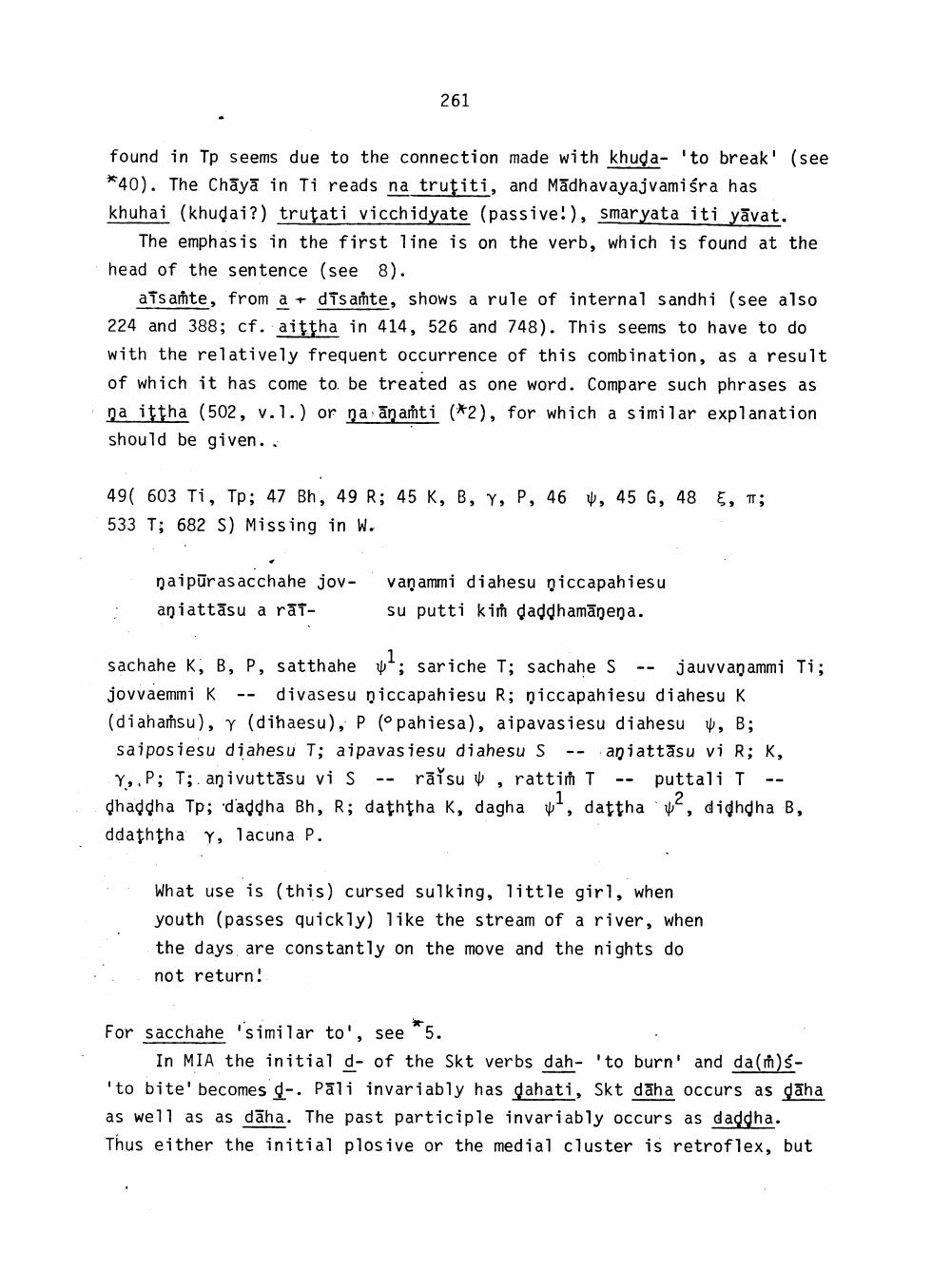________________
261
found in Tp seems due to the connection made with khuda- 'to break' (see *40). The Chāyā in Ti reads na trušiti, and Madhavayajvamiśra has khuhai (khudai?) trutati vicchidyate (passive!), smaryata iti yāvat.
The emphasis in the first line is on the verb, which is found at the head of the sentence (see 8).
ats aṁte, from a + disante, shows a rule of internal sandhi (see also 224 and 388; cf. aittha in 414, 526 and 748). This seems to have to do with the relatively frequent occurrence of this combination, as a result of which it has come to be treated as one word. Compare such phrases as na ittha (502, v.1.) or na āṇasti (*2), for which a similar explanation should be given..
, 45 G, 48
5, T;
49( 603 Ti, Tp; 47 Bh, 49 R; 45 K, B, Y, P, 46 533 T; 682 S) Missing in W.
naipūrasacchahe jov- aniattāsu a rat-
vanammi diahesu niccapahiesu su putti kim daddhamānena.
;
sachahe K, B, P, satthahet; sariche T; sachahe S -- jauvvanammi Ti; jovvaemmi K -- divasesu piccapahiesu R; niccapahiesu diahesu K (diahaṁsu), Y (dihaesu), P (pahiesa), aipavasiesu dianesu , B; saiposiesu diahesu T; aipavasiesu diahesu S -- aniattāsu vi R; K, Y,.P; T;. anivuttāsu vi S -- rāsu V , rattin T -- puttali T -- dhaddha Tp; d'addha Bh, R; daththa K, dagha v', dattha ?, didhdha B, ddaththa Y, lacuna P.
What use is (this) cursed sulking, little girl, when youth (passes quickly) like the stream of a river, when the days are constantly on the move and the nights do not return:
For sacchahe 'similar to', see 5.
In MIA the initial d- of the Skt verbs dah- 'to burn' and dam) - 'to bite' becomes - Pāli invariably has dahati, Skt dāha occurs as dāha as well as as dāha. The past participle invariably occurs as daddha. Thus either the initial plosive or the medial cluster is retroflex, but




